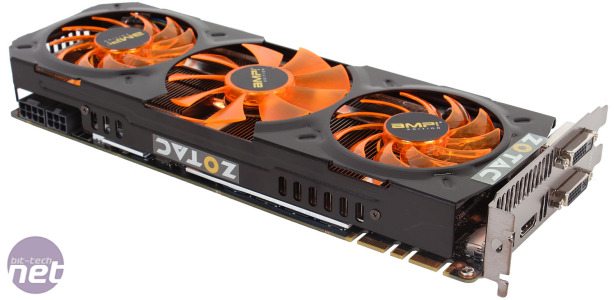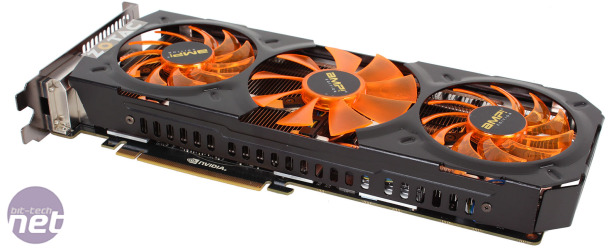Performance Analysis
As we saw in our recent Battlefield 4 performance analysis, Nvidia cards currently struggle to maintain their minimum framerates as well as AMD ones, particularly at the higher graphical presets, and even with the GTX 780 Ti AMP! this still shows. At each resolution it improves on the GTX 780 Ti's result by a respectable amount, but the ball is very much in AMD's court here. For example, the HD 7990, which can be found for as low as £400 currently, performs around 50 percent faster in terms of minimum fps. Even when just considering the average framerates though, the GTX 780 Ti AMP! isn't that far ahead of the significantly cheaper R9 290X and still trails the HD 7990 by some distance.In BioShock Infinite, things look much better. The higher clock speeds give the GTX 780 Ti AMP! an 11 percent boost over the stock card at 2,560 x 1,600. Sadly, it still can't quite reach the HD 7990's performance but it does come close and is also 11fps ahead of the R9 290X. At 5,760 x 1,080, it finally manages to squeeze past the HD 7990, taking the top spot on the chart in the process. We don't yet have 4K results for AMD's dual GPU card, which leaves the GTX 780 Ti AMP! with an easy job securing first place at this resolution too with a smooth minimum of 32fps, 23 percent over the R9 290X.
Previously we saw the GTX Titan hold its own against the GTX 780 Ti in Crysis 3, but here the higher clock speeds allow Zotac's card to surpass it at every resolution. Sadly, it's unable to catch the dual GPU cards, with the HD 7990 ahead by about 10 percent, but it's still the fastest single GPU card. However, even this isn't enough to earn it playable framerates in the incredibly taxing 4K benchmark.
Skyrim is now so easy for GPUs of this calibre to run that even at 4K the card barely breaks a sweat while hitting 60fps. It also has the upper hand over the HD 7990 in this game, and is the fastest card on test at both of the ultra high resolutions.
In Unigine Valley, its score of 2,857 is 8 percent ahead of the stock GTX 780 Ti. The only card to beat it in this test is the dual GPU GTX 690, and it trumps the R9 290X by almost a third, although Nvidia's hardware does have a general advantage in this benchmark.
Our power consumption figures when running Crysis 3 suggest that the GTX 780 Ti AMP! barely consumes more power than the regular card. This also means that it draws less from the wall than the R9 290X and R9 290, despite almost always being the quicker card by a healthy margin. Temperatures are excellent too, as the custom cooler keeps the GPU 12°C lower than the reference one while also running it faster. Not only that, but the card remained very quiet in testing, even when under prolonged load.
When overclocked, the GTX 780 Ti AMP! doesn't really do any better than the regular GTX 780 Ti when it's also overclocked. This is because the cards were boosting to the same frequencies, despite the higher base clock of the former. What the AMP! does have going for it, however, is that it's able to hit these impressive speeds without any real increase in temperature or noise output like we saw with the vanilla GTX 780 Ti.
As for the actual overclocked results, the card impressively manages to surpass both dual GPU cards in BioShock, securing itself the top spot yet again. It also edges past the GTX 690 into pole position in Unigine Valley, but can't quite manage the same feat in Crysis 3, where its higher average framerates is countered by the GTX 690's minimum, which is 2fps higher.

MSI MPG Velox 100R Chassis Review
October 14 2021 | 15:04











Want to comment? Please log in.